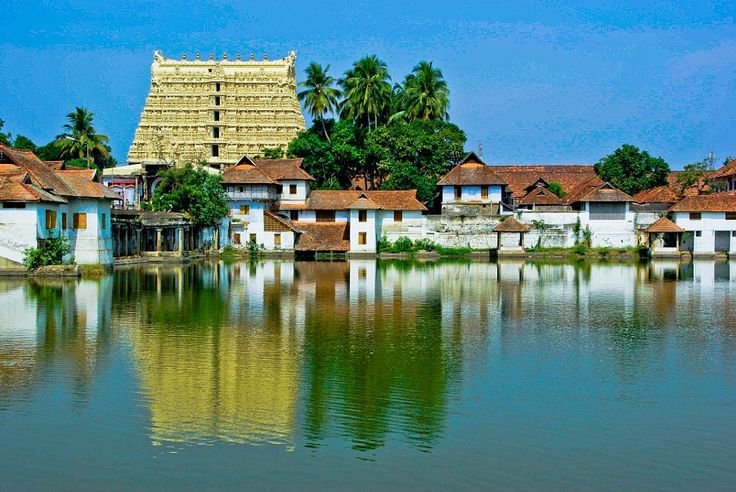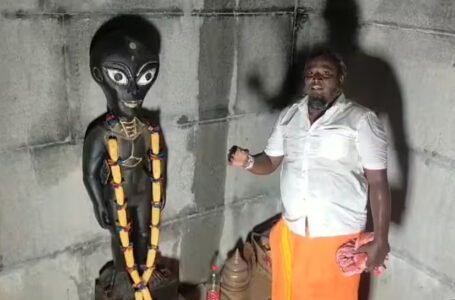Hidden Temples of India and Their Mythology

India is a land where spirituality and mythology blend effortlessly with breathtaking architecture. Beyond the grandeur of famous shrines lie forgotten sanctuaries—mystical sites hidden in dense forests, atop remote hills, or even beneath the sea. These lesser-known temples are not just historical remnants; they are alive with stories of divine interventions, lost civilizations, and celestial craftsmanship. Each temple adds a unique piece to the rich cultural fabric of India.
The Allure of Hidden Temples
The real charm of these hidden temples lies not only in their existence but in the adventure of discovering them. Coming across one feels like uncovering a long-lost chapter of history. Unlike the crowded pilgrimage centers, these temples offer quietude, their silence echoing with the footsteps of sages, kings, and seekers from centuries past. Rediscovering them deepens our understanding of India’s ancient devotion and artistic brilliance, connecting us to the roots of our spiritual heritage.
Padmanabhaswamy Temple – Kerala’s Vault of Mysteries
In Thiruvananthapuram, Kerala, the Padmanabhaswamy Temple stands as one of India’s most enigmatic places of worship. Dedicated to Lord Vishnu, the temple gained worldwide fame in 2011 when its sealed underground vaults were opened, revealing treasures of gold, jewels, and artifacts worth billions. For centuries, these riches lay hidden, safeguarded by a belief in divine protection. Legend has it that sage Vilvamangalathu Swamiyar witnessed Lord Vishnu resting on the serpent Ananta at this site, inspiring the temple’s construction. One vault, known as Vault B, remains unopened, shrouded in mystery and superstition. Local lore suggests that supernatural forces guard it, and disturbing it could bring misfortune. This blend of myth, secrecy, and wealth makes the Padmanabhaswamy Temple endlessly fascinating.
Kailasa Temple at Ellora – A Marvel Carved from Stone
Amidst the rugged terrain of Maharashtra lies the Kailasa Temple, part of the renowned Ellora caves. This architectural wonder, dedicated to Lord Shiva, was carved from a single rock—a feat often attributed to divine intervention. Mythology speaks of celestial architects crafting the temple overnight in response to the prayers of a devout queen. Though the myths captivate, the reality leaves historians equally in awe. The temple’s elaborate carvings depict scenes from the Ramayana and Mahabharata, while its towering spire is said to symbolize Mount Kailash, Shiva’s celestial home. Tucked within the rocky landscape, the Kailasa Temple remains an enduring testament to India’s artistic and spiritual legacy.
Mahabalipuram’s Sunken Temples – The Vanishing Pagodas
On the windswept coast of Tamil Nadu lies Mahabalipuram, famed for its rock-cut temples. Yet, the real mystery lies beneath the sea. Ancient legends speak of Seven Pagodas, of which six were claimed by ocean waves, leaving behind the Shore Temple. Fishermen have long reported seeing submerged temple spires, and recent underwater excavations have confirmed the presence of structures beneath the water. Mythology links these temples to King Bali, who commissioned them in reverence to Lord Vishnu. As the story goes, the gods submerged the temples to remind humanity of life’s fleeting nature. Today, the Shore Temple stands resilient against the elements, serving as a sentinel over the hidden ruins below.
Kamakhya Temple – A Celebration of Feminine Power
Resting atop Nilachal Hill in Assam, the Kamakhya Temple is a sanctuary celebrating feminine energy and creation. As one of the most revered Shakti Peethas in India, Kamakhya attracts thousands of devotees, but its inner sanctums are accessible only to priests. Mythology holds that the temple marks the spot where the womb of goddess Sati fell after Lord Shiva’s dance of destruction. Kamakhya is unique—there is no idol. Instead, a natural stone formation, believed to embody the goddess, is worshipped. The annual Ambubachi Mela commemorates the goddess’s menstruation, symbolizing fertility and life. This rare and powerful ritual draws pilgrims from far and wide, underscoring the temple’s spiritual significance.
Chennakesava Temple – Karnataka’s Architectural Gem
In Karnataka’s town of Belur, the Chennakesava Temple dazzles as a masterpiece of Hoysala architecture, dedicated to Lord Vishnu. While the temple’s beauty is well-documented, tales persist of secret tunnels and hidden chambers. Legends hint at subterranean passages protecting ancient relics, guarded by divine forces. Intricately carved from stone, the temple showcases exquisite sculptures portraying epic stories, celestial beings, and intricate designs. Beyond its surface beauty, Chennakesava Temple stands as a bridge between India’s artistic and spiritual past, preserving the grandeur of the Hoysala dynasty.
Veerabhadra Temple – The Floating Pillar Mystery
In Lepakshi, Andhra Pradesh, the Veerabhadra Temple captivates visitors with its famous floating pillar. One of the stone pillars seemingly hovers above the ground, a phenomenon that continues to puzzle engineers. Dedicated to Lord Shiva, the temple’s walls and ceilings burst with vivid frescoes and sculptures narrating the Ramayana. Local folklore connects the temple to Jatayu, the mythical eagle who tried to rescue Sita from Ravana. It is said Jatayu fell at Lepakshi, leaving behind a footprint-shaped mark. The floating pillar and these myths enhance the temple’s mystique, drawing pilgrims and history enthusiasts alike.
Udayagiri Caves – Silent Testaments to Ancient Glory
The Udayagiri Caves in Madhya Pradesh house some of India’s oldest rock-cut temples. Among them, the depiction of Lord Vishnu as Varaha, lifting the Earth from cosmic waters, stands as a symbol of preservation and protection. Hidden for centuries by thick vegetation, the caves were rediscovered in the 19th century. Local traditions speak of sages meditating within their depths, leaving behind an aura of serenity that lingers even today. Udayagiri’s carvings serve as lasting reminders of the Gupta Empire’s artistic and spiritual contributions.
Conclusion
India’s hidden temples are more than architectural masterpieces—they are keepers of ancient stories and guardians of spiritual traditions. Each rediscovered temple enriches the ongoing narrative of India’s spiritual and cultural evolution. As these sacred sites continue to reveal their secrets, they remind us of the power of faith, the genius of ancient artistry, and the timeless beauty embedded in India’s heritage.


